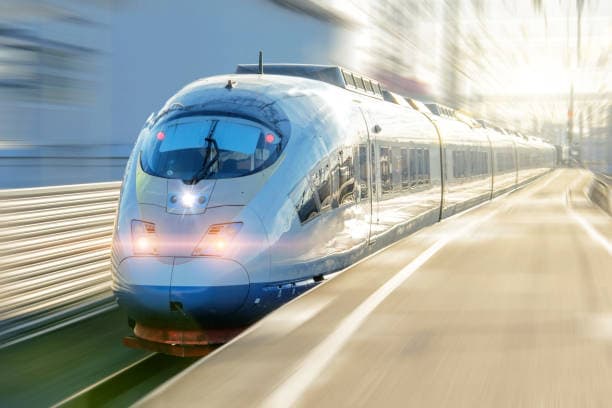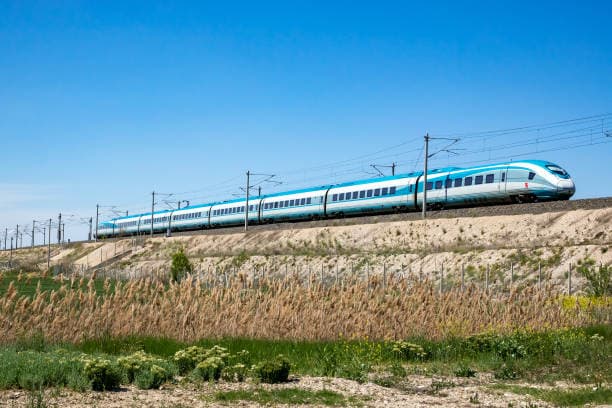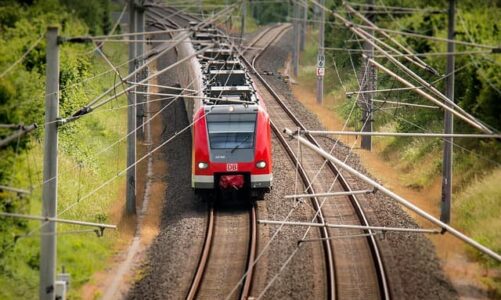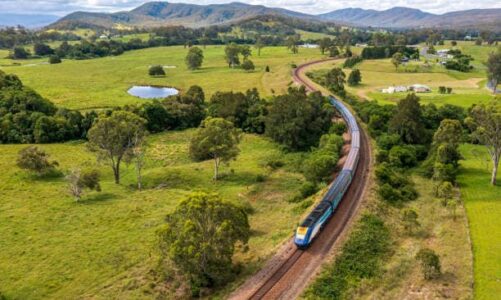Global economies, civilizations, and landscapes have been shaped by the revolutionary advancement in human mobility that was represented by the creation of railroads. From the earliest steam locomotives to the modern high-speed trains, this voyage demonstrates ingenuity, tenacity, and an ongoing pursuit of efficiency and speed.
The Inception of the Railroad Age
The development of the steam locomotive at the beginning of the 1800s marked a turning point in the history of transportation. Often referred to as the “Father of Railways,” George Stephenson designed “Locomotion No. 1,” the first steam-powered locomotive, for the Stockton and Darlington Railway in England in 1825. This occasion saw the deployment of steam locomotives on the world’s first public railway, revolutionizing the movement of people and products and greatly cutting down on journey time.
Broadening Perspectives
Early locomotives were so successful that railways quickly spread throughout the United Kingdom and then the rest of the world. The famous Liverpool and Manchester Railway, which debuted in 1830 and had double track, scheduled trains, and signaling systems, served as the model for other railway construction projects. From Russia’s Trans-Siberian Railway, which spanned over 9,289 kilometers, to the Union Pacific Railroad, which assisted in bridging the American West, railroads started to transverse continents.
Railroading’s Golden Age
Many people refer to the late 19th and early 20th centuries as the railroad golden period. Significant progress was achieved in signaling technology, track construction, and locomotive design during this time. With increased strength and efficiency, steam locomotives were able to move longer trains faster. Exotic passenger trains that provided unmatched comfort and speed over great distances, such as the Transcontinental Railroad and the Orient Express, embodied the glitz of the time.
The Effects on the Economy and Society
Railroads have a significant effect on both the economy and society. They made it possible for commodities to move quickly, cutting prices and creating new markets. Additionally, railroads helped the United States expand westward, which aided in the growth of new communities and industries. They also contributed significantly to the industrialization process by supplying the infrastructure required for large-scale manufacturing and delivery.
The Switch to Electric and Diesel
The limitations of steam locomotives became evident by the middle of the 20th century. They were expensive to maintain, labor-intensive, and inefficient. The introduction of electric and diesel locomotives provided a more effective and environmentally friendly option. The slow phase-out of steam locomotives was the result of a transition that started in the 1930s and picked up speed after World War II.
Technological Developments in Electric and Diesel
Significant advancements in efficiency, dependability, and speed were made by diesel and electric trains. Because of their excellent efficiency and rapid acceleration, electric trains—which are propelled by overhead lines or third rails—became well-liked for short-distance and commuter services. Long-distance and freight services were dominated, however, by diesel trains. The best of both worlds was merged with power and flexibility with the creation of diesel-electric locomotives, which employ a diesel engine to generate electricity to drive the train’s motors.

The High-Speed Rail Era
A major turning point in the history of rail transportation was the emergence of high-speed rail, which brought about a transition to train systems that were quicker, more effective, and equipped with more sophisticated technology. High-speed rail (HSR) network expansion and widespread acceptance have defined this era, which started in the middle of the 20th century and is still going strong today.
Launch & Trailblazing of Japan’s Shinkansen
The Shinkansen, or “bullet train,” introduced in Japan in 1964 marked the official start of the era. This invention revolutionized travel, not merely making significant advancements in rail technology. Two of the biggest cities in Japan, Tokyo and Osaka, were connected by the Shinkansen, a train system with top speeds of 210 km/h (130 mph). This resulted in a significant reduction in travel time between these locations and established a new benchmark for rail travel efficiency and speed. The Shinkansen’s performance demonstrated how high-speed rail can compete with air travel for medium-distance routes, improve connectivity, and alter regional economies.
Technological Progress and Innovative Design
Because of its advanced technology and unique architectural elements, high-speed trains can travel at far faster speeds than conventional rail. This includes high-speed rail lines that are specifically engineered to handle higher velocity with gentler curves and gradients, aerodynamically designed train noses to reduce drag, and sophisticated suspension systems for stability and comfort at high speeds. These trains also have advanced signaling and control systems that guarantee safety even when traveling at fast speeds.
Worldwide Growth and Acceptance
Following Japan’s lead, a number of other nations started building high-speed rail systems. With the introduction of the Train à Grande Vitesse (TGV) in 1981, France set the standard for speed in Europe, matching and later surpassing the Shinkansen. The TGV’s economic success and record-breaking performance encouraged the creation of other high-speed rail systems throughout the continent, such as Italy’s Frecciarossa, Spain’s AVE, and Germany’s InterCity Express (ICE).
High-speed rail saw tremendous expansion throughout Asia, with China emerging as the world leader. With trains capable of traveling at up to 350 km/h (217 mph), China has constructed the greatest high-speed rail network in the world since the opening of its first high-speed line in 2008. The nation’s dedication to high-speed rail as the mainstay of its transportation network is reflected in this quick expansion.
Effect and Potential Futures
High-speed rail has had a significant impact on the economy, society, and travel. It has essentially reduced geographical distances and brought areas closer together by making long-distance travel faster and more convenient. With the benefits of quicker check-in times, reduced environmental effect, and links from one city core to another, high-speed trains present a competitive option to flying.
In summary
Railroad history is a celebration of human ingenuity and the unwavering quest of progress. Railroads have continuously changed over time, from the first steam locomotives trundling along at slow rates to the sleek high-speed trains that can now carry passengers across continents in a matter of hours. The innovative heritage of the railroads promises to propel us forward faster and more sustainably than in the past.



